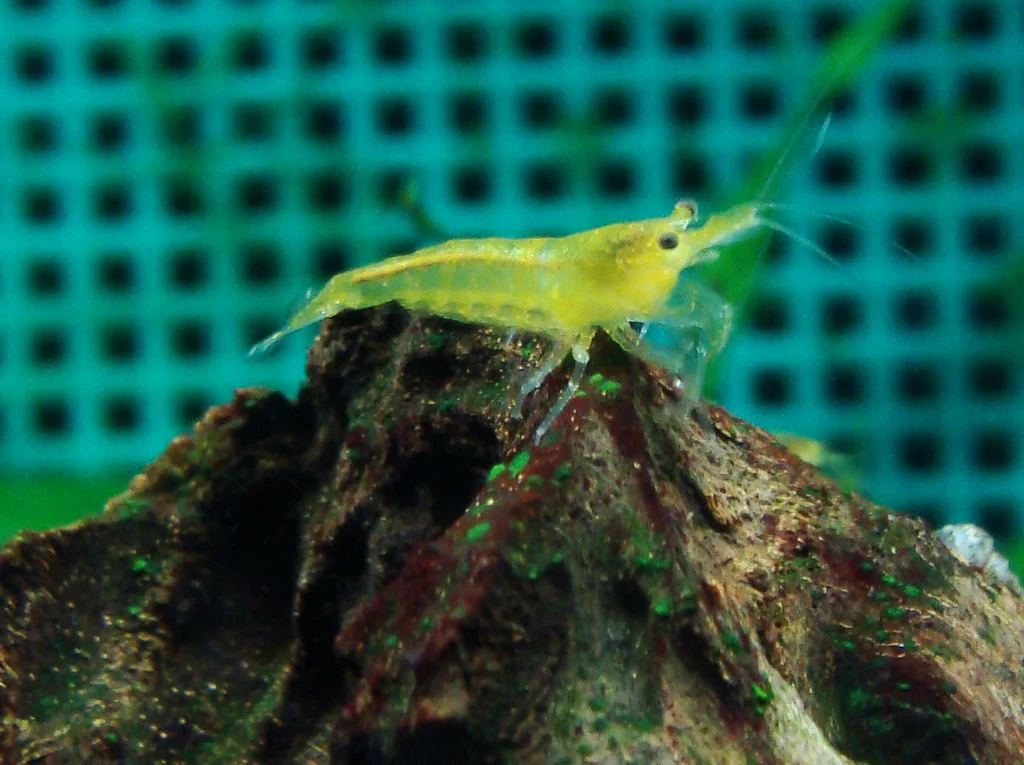Do you know that some tiny shrimps can punch you as fast as a bullet? We know you might assume that the world underwater is simple, like how interesting can a fish be? But in reality, the aquatic world is anything but boring! For example, take the shrimp: he’s small but the shrimp lifespan is anything but.
In today’s article, we talk about one of the quirkiest species in the world, the shrimp! Yes, we understand that it might not sound amazing, but we guarantee that this tiny creature will not disappoint you. Shrimp are actually one of the most unique and interesting animals. For instance, the shrimp lifespan is quite long as compared to their tiny size. Moreover, they have an amazing response in case a limb is lost. But that’s not all, there’s still much to discover. Come along as we discuss the amazing wonders of a shrimp.
Take a guess: What do you think is the longest lifespan of a shrimp? Tell me in the comments below and read the article to find out the actual answer!
First things first! Before we go through the lifespan of this amazing creature, let’s have a general understanding of what the Shrimp is.
Overview of Shrimp Species
Shrimp are a diverse group of crustaceans. These crustaceans are found in both, saltwater and freshwater depending on their species. Interestingly, shrimps have almost 2000 different types, belonging to the order Decapoda. Each shrimp species is unique and has different physical and behavioral characteristics along with a specific role in their ecosystem. Some of the most popular shrimps include the Whiteleg Shrimp, Tiger Shrimp, and Cherry Shrimp.
Naturally, shrimps are very adaptable and thrive in various habitats. Some of them thrive in the depths of the sea while others flourish in freshwater rivers. They add a huge array of biodiversity to nature and also provide a wide variety to keep in your tank. Here’s a breakdown:

Most popular shrimps, like the Cherry Shrimp and the Ghost Shrimp, are very easy to care for. They can thrive in a variety of conditions thanks to their hardy nature. This makes them ideal for both experts and beginner fish keepers. Additionally, their low bioload and small size mean that a huge tank with complex filtration is not necessary. On top of that, the shrimp lifespan can be anywhere between 1 to 6 years, so it’s a long-term companion. Win win isn’t it?
In general, a well-cycled aquarium with at least 10 gallons of space would be enough. The ideal temperature is about 68 to 78 degrees Fahrenheit. Moreover, the ideal pH should be maintained between 6.5 and 8.0. These requirements mimic the Shrimp’s natural habitat and must be provided. However, this tiny creature can manage some fluctuation.
Talking about its natural habitat, you must keep the tank clean with low ammonia and nitrate levels. Moreover, hiding spots should be made using plants and rocks. Additionally, a dirty tank won’t be a problem as these natural cleaners feed on detritus, algae, and biofilm, but make sure you change the water regularly.
All in all, these creatures are pretty self-sufficient if you ask me. Keeping them in a tank will not only elevate the aesthetic but also add diversity to your aquarium!
Shrimp Lifespan
Shrimp have a very interesting lifespan. As compared to their small body sizes, one must assume that they might live only for a couple of months. However, their lifespan is anything but small, considering their tiny and cute bodies.

The shrimp lifespan varies significantly depending on its habitat and species. Here’s a detailed breakdown:
Shrimp Lifespan in the Wild
In the wild, shrimp often live a short life. Due to reasons like predation, disease, and environmental fluctuations, these crustaceans don’t survive for long. Moreover, their small size makes them defenseless in such conditions as they can’t hold their ground.
Typically, a species like the whiteleg shrimp can live up to 1 to 2 years. That too because of its natural defense mechanisms like the exoskeleton, rapid movements, and camouflage, this small creature can thrive in the wild but for a small period.
Moreover, the Mantis shrimp is another type of crustacean that can live up to 6 years. Thanks to its world-renowned powerful strike, this shrimp can fight off some predators. Additionally, it has a sharp vision and burrows in the ground to hide from threats.
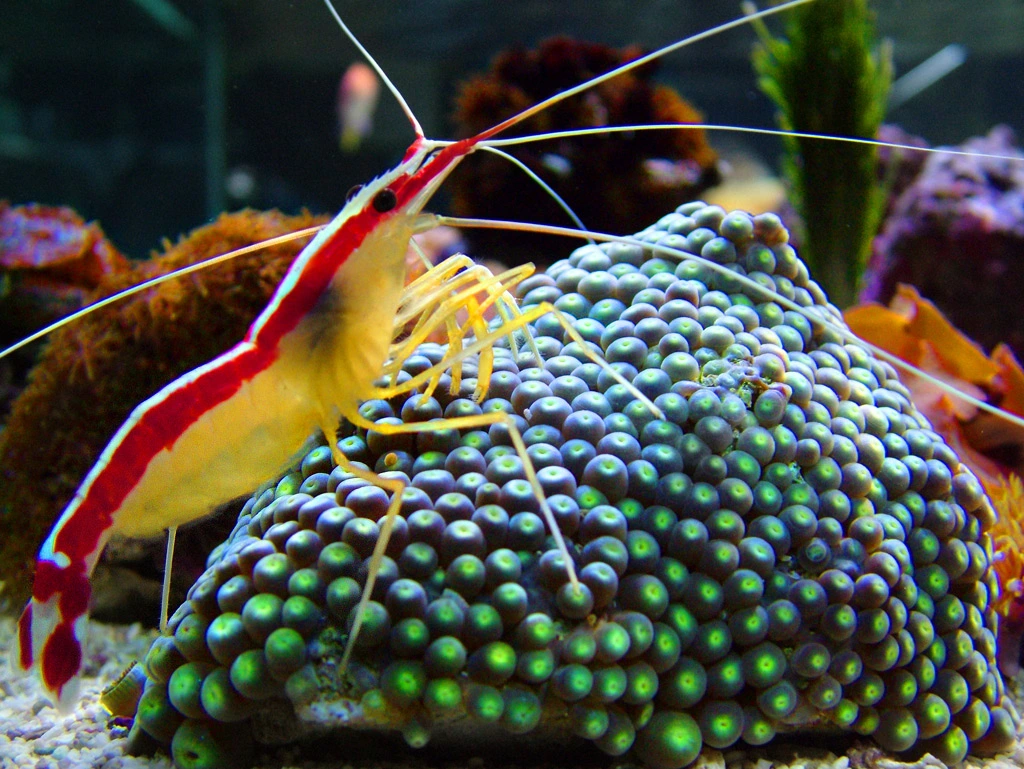
All in all, the shrimp lifespan in the wild depends on its habitat, species, and ability to survive. If its habitat has less predators and competition, along with ideal water conditions then it will likely live longer. However, conditions are usually undesirable in the wild, thus shrimp lifespans are shorter.
Shrimp Lifespan in Captivity
In captivity, the shrimp lifespan is generally longer as compared to its lifespan in the wild. The controlled environment in captivity provides the shrimp with stable conditions.
For instance, the Green Mantis Shrimp can ideally live up to a whopping 20 years in captivity. As there are no predators and competition in the tank, the shrimp can thrive and flourish. However, some factors should be considered for a longer shrimp lifespan. For example, their diet and tank condition must be ideal, otherwise they will not thrive for a long time.
Factors Affecting Shrimp Lifespan in Captivity
As discussed above, every variation of shrimp has unique characteristics. The same goes for their lifespans. Generally, different species of shrimp exhibit a varied lifespan. For example, the Amano shrimp has a lifespan of about 3 years while the cherry shrimp has a lifespan of about 2 years.
However, no one can tell the exact age of any species as it depends on the shrimp’s health and lifecycle. Generally, the shrimp lifespan can be extended by providing proper care and a stable environment. Read the information given below to understand the factors that affect the shrimp lifespan.
Tank Conditions
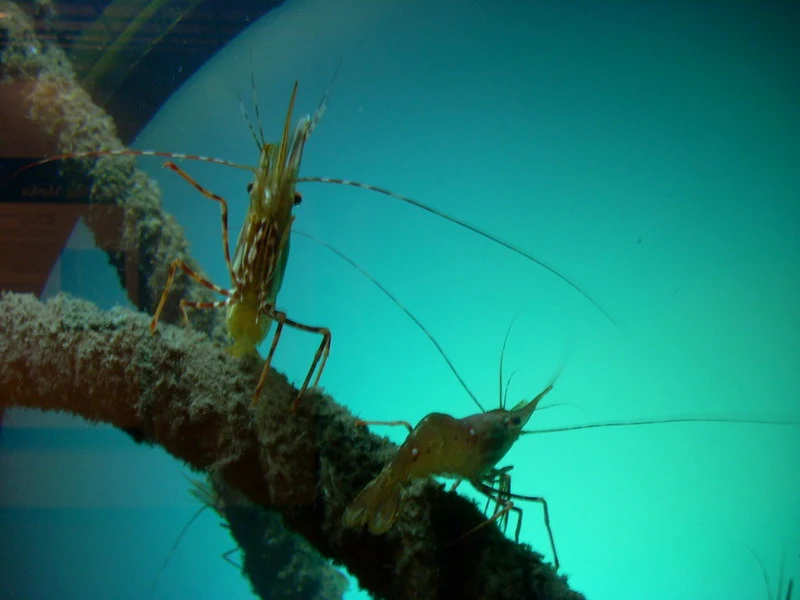
As mentioned earlier, shrimps live longer in captivity as compared to the wild. However, they must be provided with specific conditions to thrive in. Although they have a hardy nature and can manage fluctuation, they require optimal conditions for a longer lifespan.
The Key factors influencing their lifespan include water quality, temperature, and diet. Here’s a breakdown.
The water quality must be maintained. Also, the tank water should be aligned with the shrimp’s nature. As we discussed, shrimps live both in saltwater and freshwater so you must provide the right sort of water. Additionally, maintaining optimal tank water conditions is crucial. Shrimps may be compromising on temperature but they are sensitive to ammonia and nitrite levels. To maintain the water’s cleanliness. Here is a general water changing routine:
- Small Tanks (under 10 gallons): Change 20-30% of the water weekly.
- Medium Tanks (10-30 gallons): Change 10-20% of the water weekly.
- Large Tanks (over 30 gallons): Change 10-15% of the water twice a week.
The water temperature and water pH must be ideal as well. They should be maintained as dictated in the overview section of this article.
Lastly, stress must be considered. Overcrowding and sudden changes in water parameters can stress out the shrimp. It’s best to add a natural look to the tank by using plants and rock caves. After all, more space in the tank means more happier shrimp! Try to mimic the shrimps natural habitat in the tank, this will promote natural behavior and longer shrimp lifespan.
Diet and Nutrition
The shrimp lifespan is directly affected by its diet and nutrition. No matter what type of shrimp you have, a balanced diet that is rich in proteins, vitamins, and minerals is a must.
Here are some of the best shrimp foods out there:
- Dennerle Shrimp King Complete Sticks Food 45 Gram
- Sera Shrimps Nature 1.9 oz 100 ml
- Aqua Natural Shrimp Color 1.94oz wafer fish food

In terms of nutrition, shrimp food should include algae, plankton, and quality pellets. These foods allow the shrimp to grow while maintaining their natural colors. Moreover, these foods are essential to fulfill the shrimp’s nutritional requirements. Here are some homemade options for a shrimp diet.
- Blanched Vegetables
- Cooked Fish
- Egg Yolk
- Shrimp Pellets
- Seaweed
- Chopped Garlic
- Algae
- Fruit
- Crushed Shells
- Cooked Oatmeal
Ensure that the food is in small pieces, so the shrimp can eat it easily. Also, avoid overfeeding the fish as leftover food makes the tank dirty. Moreover, extra food can make your shrimp sick, and who wants that!
Tankmates and Overcrowding
Shrimp lifespan can be significantly affected by tankmates and overcrowding. Generally, A shrimp can live a longer life in a well-maintained tank. However, their longevity decreases if tank conditions are poor. For instance, if you add tankmates that could harm the shrimp, it won’t be able to survive at all. So it’s best to always check the compatibility of tankmates before adding them to your tank. Here are some of the best tankmates for Shrimp.
- Neon Tetras
- Otocinclus Catfish
- Small Snails
- Rasboras
- Pygmy Corydoras
- Kuhli Loaches
- Endler’s Livebearers
The rule of thumb is that the tankmates must be non-aggressive and not too big to see shrimp as food. Moreover, all inhabitants of the tank must have the same temperature, pH, and water quality requirements.
Lastly, avoid overcrowding the fish tank. This not only stresses the shrimp but also makes other tankmates angry and aggressive. Ultimately reducing the lifespan of all the fish and crustaceans in the tank.
Shrimp lifecycle
The shrimp lifecycle is directly connected to the shrimp lifespan! As discussed earlier, shrimp have many types and each one is unique. Most of the shrimp variations have different lifecycles, some slow and some fast. The quicker the shrimp grows and matures, the shorter its lifecycle or lifespan. Here’s a general breakdown of the shrimp lifecycle:
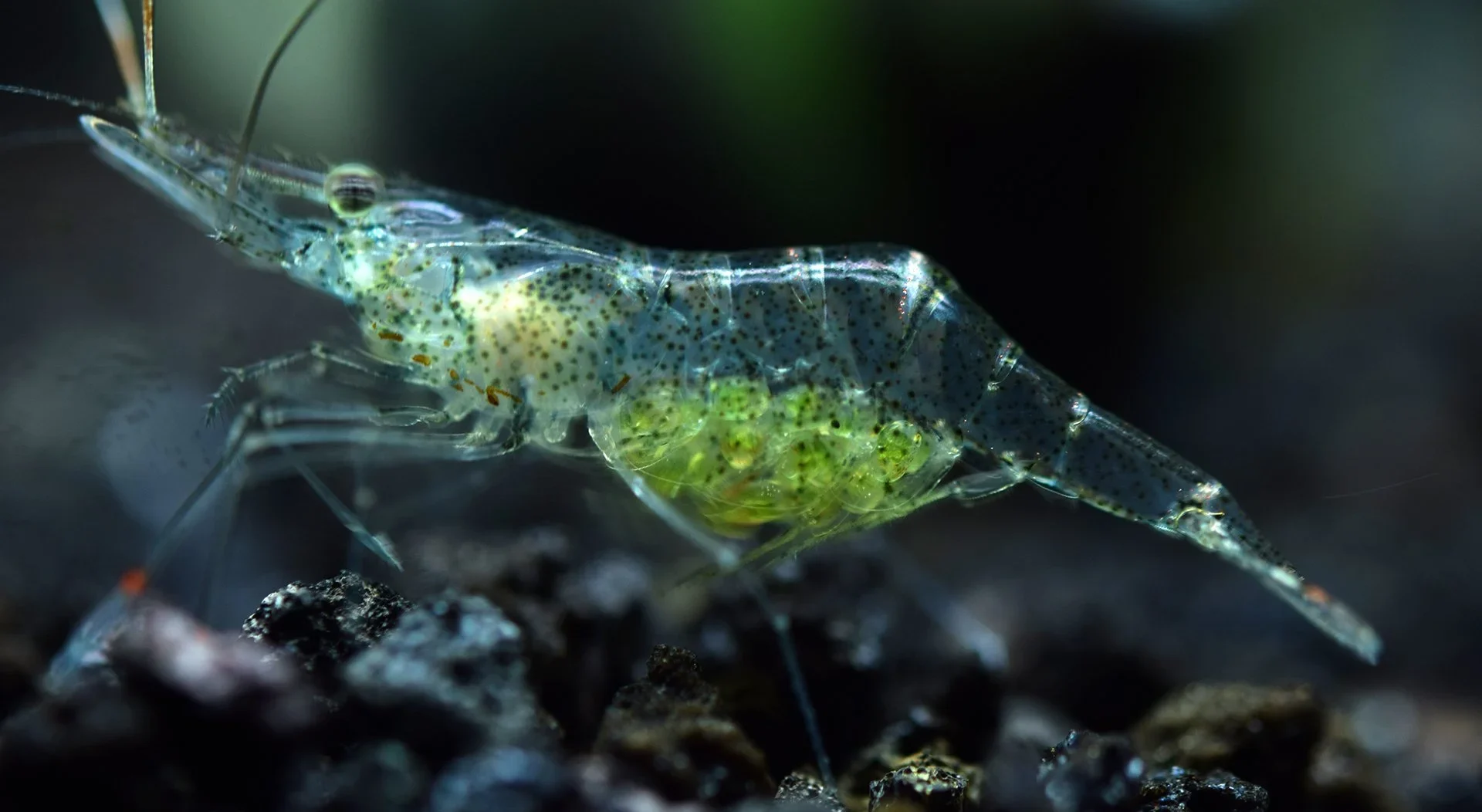
- Egg Stage
This is the first stage of a shrimp’s lifecycle. During this stage, the female shrimp carries fertilized eggs in the pleopods, a special bag on their abdomen. Usually, it contains hundreds of eggs at one time. The eggs incubate in this pod for about 1 to 2 weeks and hatch.
- Larval Stage
After hatching, the eggs enter a critical phase of their lifecycle, known as the larval stage. The shrimp babies go through processes like molting to shed their exoskeleton. Moreover, now they don’t have the protection of their parents so predation is a threat as well. The physical development of the shrimp occurs in this stage.
- Adult Stage
After the larval stage and multiple substages, the shrimp enters the adult stage. In about 4 to 6 months from its birth, the shrimp becomes an adult. However, this time can vary according to the type of the shrimp.
In this phase of its lifecycle, the shrimp will have a hardened exoskeleton. Moreover, the shrimp will be capable of reproduction, the primary focus of this stage.
- Senescence
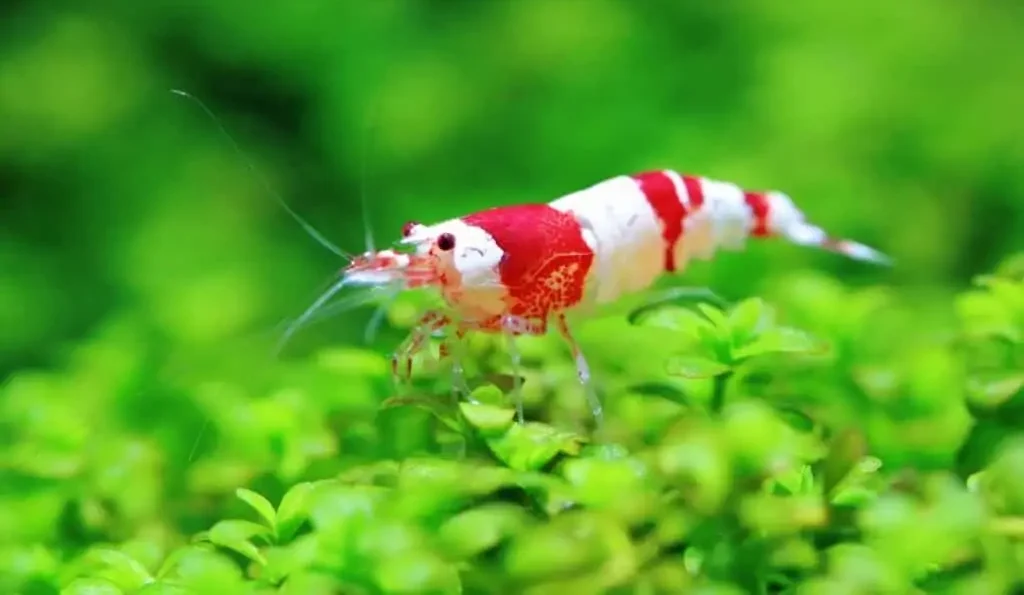
Senescence is the final stage of a shrimp’s lifecycle. The shrimp lifespan will be completed in this stage as its health and reproductive capacity will decline. Moreover, this shrimp will get older and eventually die.
Interesting Facts about Shrimp
- Regeneration Abilities
In addition to a long and complex lifecycle, shrimp has many exciting characteristics. Interestingly, this bad boy can grow lost limbs and appendages. When a shrimp loses a leg or a claw, another starts to develop. Moreover, this ability isn’t limited to limbs, even eye stalks and antennas can regrow.
- Powerful Claws
Despite their small body size, shrimps have strong claws. Especially, the Mantis Shrimp is world-renowned for its strong strikes. Their claws are not only used for defense but also for hunting.
Interestingly, the Mantis shrimp claw can reach the speed of a bullet, up to 50 miles an hour. This force and precision are more than enough to break thick glass and crack open shells!
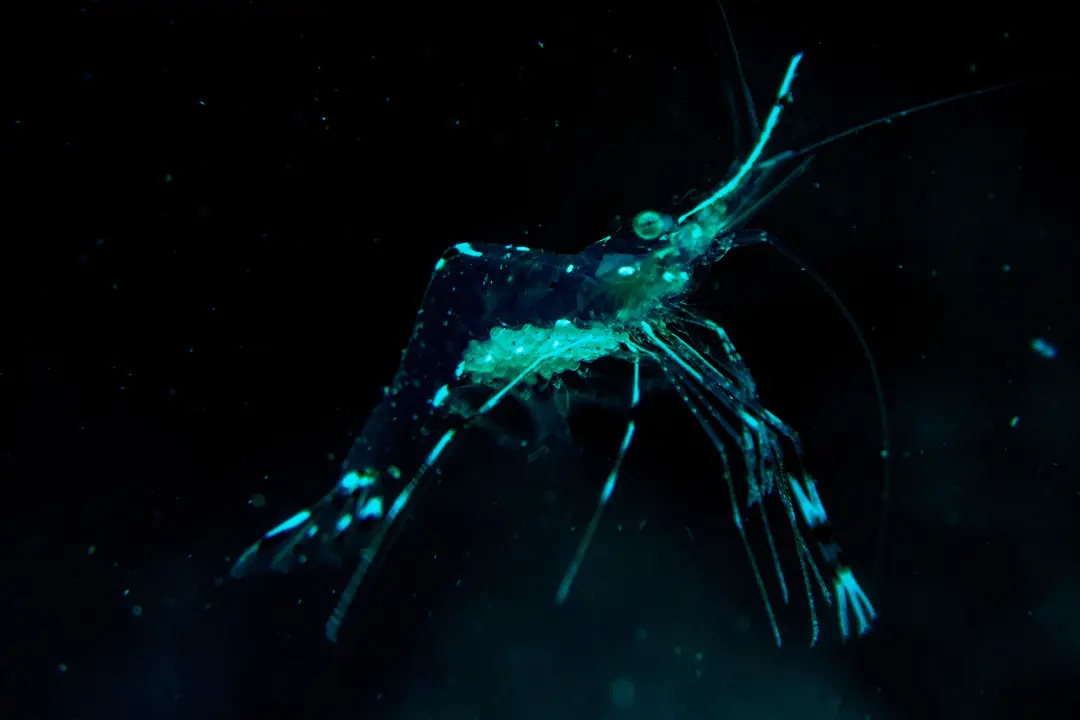
- Bioluminescence
Bioluminescence is another astonishing characteristic of shrimp. This crustacean can produce light through their bodies by using complex biochemical reactions. Mostly the shrimp species that live in the deep sea can perform such activities. It helps them attract prey and fend off predators.
Top 5 Types of Shrimp
Now that we have discussed all you need to know about the shrimp lifespan and their interesting characteristics, let’s move on to the top 5 shrimp
Mantis Shrimp
The mantis shrimp are vibrant marine crustaceans. They have one of the longest lifespans as shrimp. Usually, Mantis shrimp can live up to 7 years, however, some species like the green mantis shrimp can live up to 20 years. In the wild, Mantis shrimp survive for a couple of months to almost 7 years.

In terms of body size, Mantis shrimps can vary somewhere between 2 to 18 inches. They have a broad and segmented body covered with exoskeleton. This exoskeleton has vibrant colors that add to the look.
Interestingly, this shrimp has remarkable vision. Its eyes have 16 different color receptors so it can detect a vast array of colors. Additionally, it has a set of fast, powerful, and agile claws. All the characteristics combined help the shrimp survive in the wild.
Cleaner Shrimp
As the name suggests, Cleaner shrimp are well known for their intriguing cleaning behavior. These small and colorful creatures have a symbiotic relationship with fish. This means they derive food from fish and benefit them, typically by removing parasites and dead skin cells. Their lifespan can vary depending on many factors but generally, they live for 2 to 5 years.

Talking about appearance, a Cleaner shrimp has a small body of about 1.5 to 3 inches. Their body has bustling shades of red, adorned with white stripes. They have a hardy nature and thrive well in a reef aquarium.
This shrimp can literally communicate with fish. To clean a fish, the Cleaner shrimp waves its pincers in a specific way. If the fish requires its service, it will allow the shrimp to cling to the body and start working. This mutualistic relationship highlights the complex interactions in marine ecosystems.
Whiteleg Shrimp
Whiteleg shrimp are very popular however, they have a short lifespan. Typically about 1 to 2 years in the wild and 2 to 3 in captivity. They require a controlled environment to thrive but they can manage slight fluctuations. They generally have a hardy nature and adapt well to many water conditions.

An adult whiteleg shrimp can reach up to 9 inches in length, which is pretty huge compared to other shrimps. They have a transparent body with a pink or light gray tint. Moreover, they have a distinct and elongated abdomen along with long, slender legs. All these factors allow it to move and camouflage better in survival conditions.
The most interesting fact about this shrimp is its rapid growth. In just 6 months, they grow from larvae to market size. This quick growth makes them one of the easiest shrimps to get at any fish market. However, they have a comparatively short lifespan as well.
Ghost Shrimp
Ghost shrimp are small freshwater crustaceans recognized for their transparent bodies. These crustaceans have a unique look with all of their organs on display. Typically they thrive for only 1 to 2 years. Thanks to their beautiful and almost transparent look, they are also called glass shrimp.
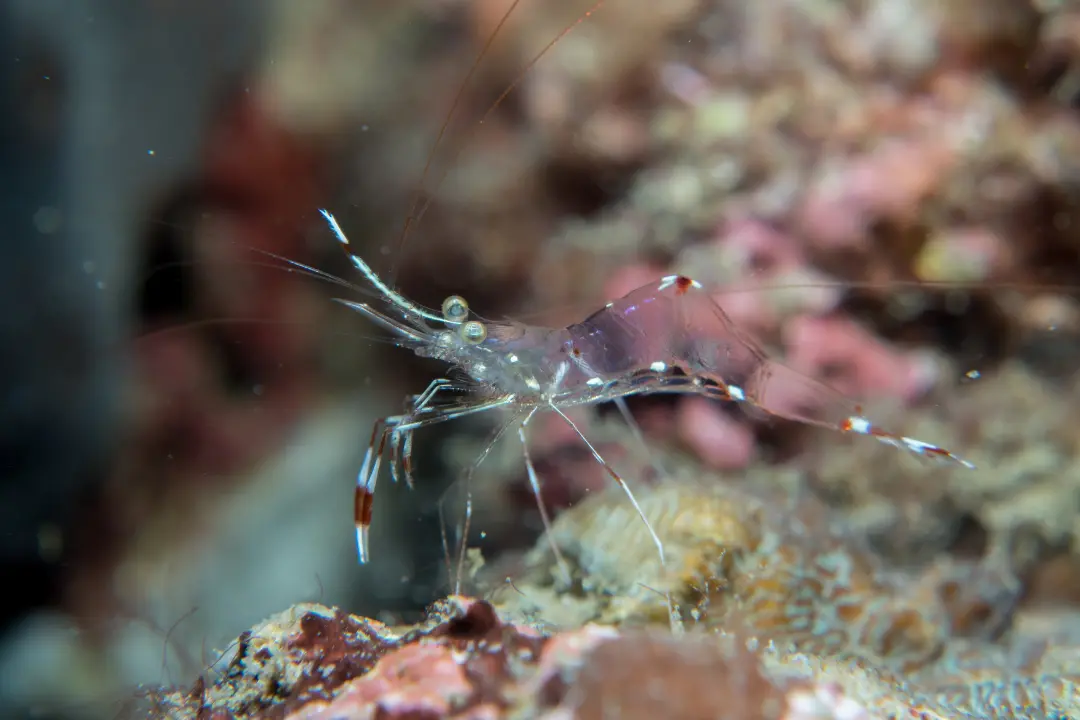
In terms of size, they only have a 1.5 to 2 inch body. This body is see-through meaning you can see their internal organs, especially when they are eating. This allows the ghost shrimp to camouflage and blend in its surroundings. Want to know more about this exciting ghostie? Check the the full article on Ghost shrimp and its diet.
Interestingly, this shrimp can change its color according to its food. This color change isn’t on purpose, the body just gets a shade of the eaten food.
Amano Shrimp
Amano shrimp are popular freshwater shrimps. Usually, they live for about 2 to 3 years in a well-maintained tank. Thanks to this, they have a short shrimp lifespan.
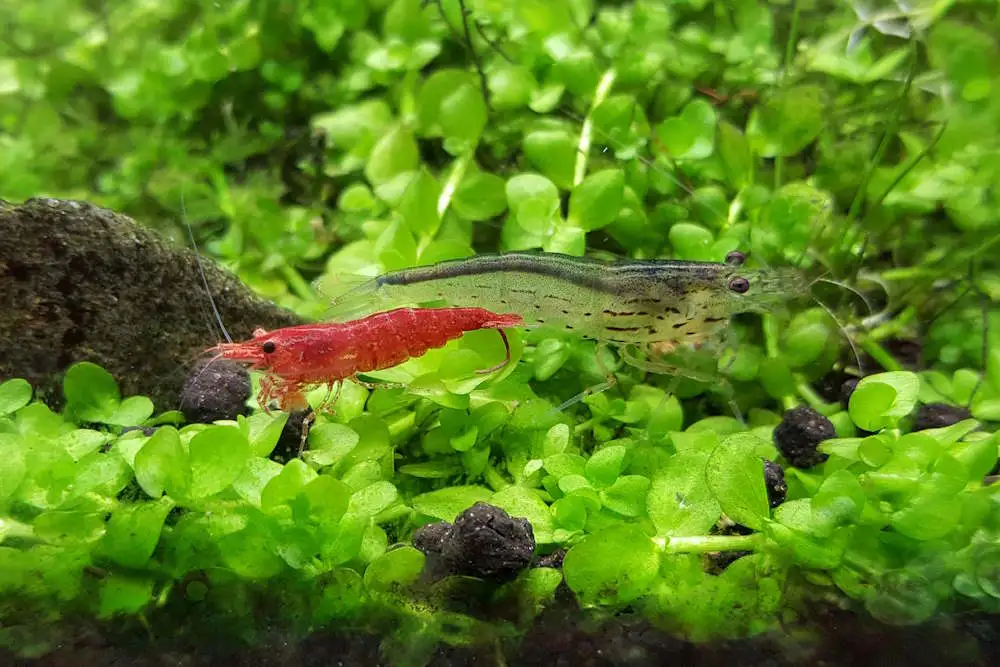
In terms of size, this shrimp can grow about 2 inches in length. This makes them medium-sized shrimp, so they don’t need a lot of space. Just like the glass shrimps, Amano shrimps have a translucent body. However, slight green and gray tones can be observed all over their bodies, often adorned with dark spots. This coloration helps them blend in the environment and also completes the cute look.
Their antennas and long legs allow them to scavenge for food and clean algae from the tank. Thanks to this algae-cleaning habit, this shrimp is very popular amongst aquarists. Moreover, Amano shrimp play a vital role in the ecosystem by enforcing algae control.
FAQ’s
How long do shrimp live?
Shrimps have varied lifespans, depending on their species. Moreover, the shrimp lifespan is also affected by many factors such as diet, environmental conditions, and water parameters. On average, a shrimp can live for a couple of months or up to 6-7 years.
How long do mantis shrimp live?
Mantis shrimps have a vast variety of shrimps, each with a different lifespan. For example, a green mantis shrimp can live up to 20 years while a pistol mantis shrimp can thrive for about 5 years, or slightly more. On average, a mantis shrimp can live for 3 to 6 years.
What’s the average lifespan of a shrimp?
On average a shrimp can live for 6 to 7 years max. However, this time can change depending on many factors.
What color is a dead shrimp?
A dead shrimp will not show signs of activity. It will have a pale pink color. Quickly remove it from the tank as soon as possible to avoid contamination.
What do shrimp eat?
Shrimps generally eat small plants, detritus, and algae. It’s best to feed them some algae-based pellets and blanched vegetables for a longer lifespan and healthier lifestyle.
Conclusion
All in all, we discussed the varying shrimp lifespan and unique characteristics of shrimps. In this article, we thoroughly explained the shrimp lifespan and what factors affect it. Additionally, we covered more detail about the shrimp lifespan in the wild and captivity. In essence, the shrimp lifespan depends on the species, tank conditions, diet and nutrition, and tankmates.
Lastly, for a better understanding of how the shrimp lifespan varies from species to species, we discussed the main phases of a shrimp lifecycle. In addition, we discussed the top 5 most popular shrimps along with their lifespans for an in-depth review.
Let us know which shrimp do you like the most. The Amano shrimp or the Mantis shrimp. We’d love to hear your thoughts and questions in the comments below!

